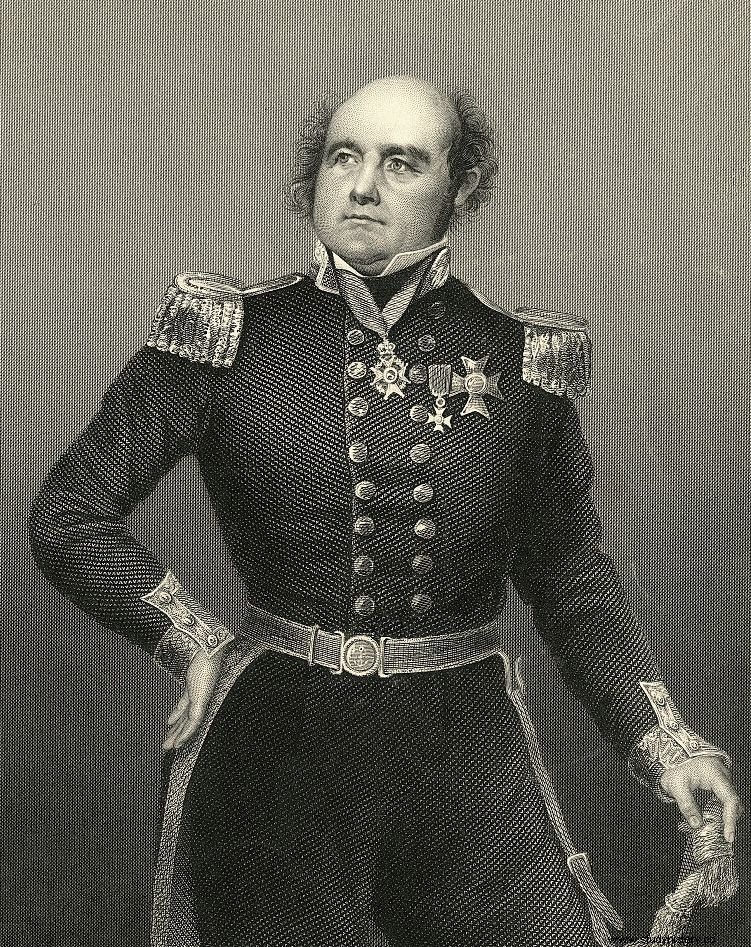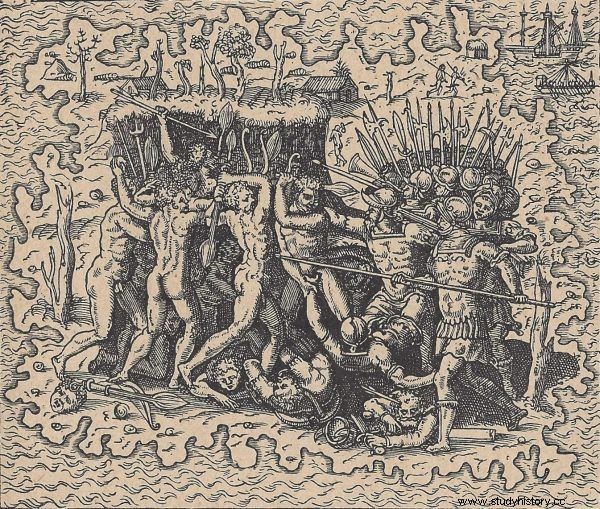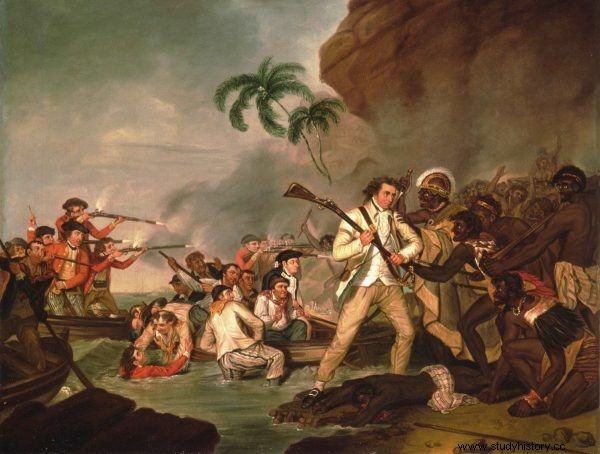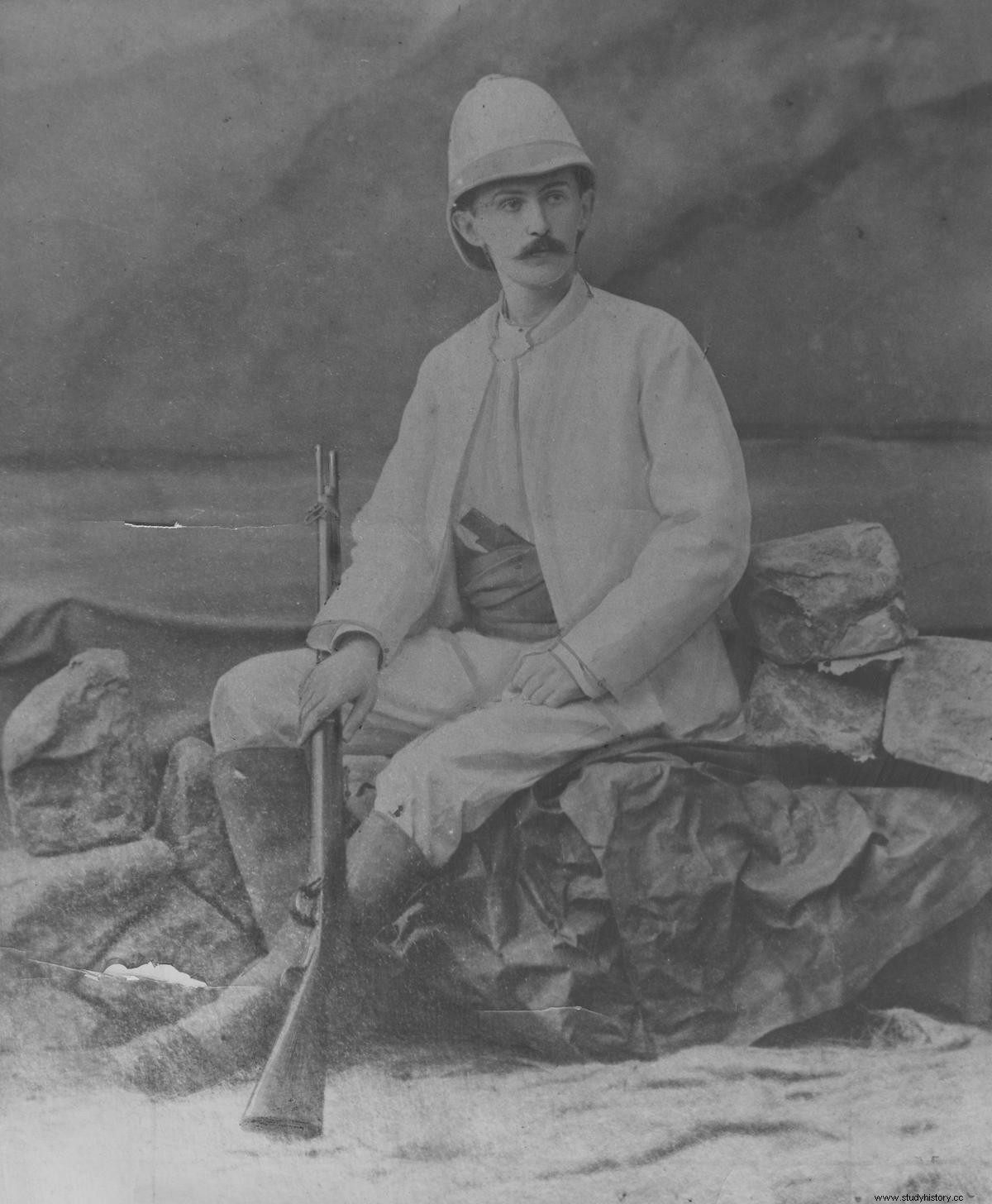Expeditions into the unknown have always been associated with great risks. Death lurked at every turn during research expeditions. The fortunes of travelers who did not return were often terrifying. And sometimes ... they seemed to be basically pointless.
Sir John Franklin (1786-1847) was a great celebrity of his time. He explored Australia, around Spitsbergen and what is today Canada. Thanks to his expeditions, we got to know, for example, the course of the Arctic coasts of America. For his services, he received the title of nobility and the position of governor of Tasmania. In the end, however, he got bored with the duties of a colonial administrator and, despite his advanced age, took command of another polar expedition. This time, he was to find out if there was a so-called Northwest Passage, the northern waterway connecting the Atlantic and Pacific Oceans.
How did Franklin die?
The ships "Erebus" and the "Terror" he commanded departed from Portsmouth, England in 1845, and headed north. They were last seen off the west coast of Greenland. After that, hearing about Franklin was lost. However, since similar expeditions usually lasted several years - which is why they took large amounts of supplies with them - initially no one cared about this disappearance.
The search began only in 1848. They were organized by the Admiralty, and with her the wife of the missing person and many other private persons. Charles Dickens, among others, spoke on the matter. There was a reward for finding the crew. As a result, in the years 1848-1889 about 40 so-called "Franklin expeditions" went to the rescue. Some have ended in disasters on their own, claiming more lives in total than the original expedition.

The ravenous members of Admiral John Franklin's expedition ate each other.
In the end, however, the remains of several members of the missing crew on King William Island, part of the Arctic Archipelago, were found. Some light on the fate of Franklin's people was also shed by conversations with the Inuit inhabitants. The truly electrifying news reached the British public in 1854. The ravenous crew of the ships Erebus and Terror reportedly turned to cannibalism! A great storm broke out in the press then - it was inconceivable that British citizens could do something similar.
Sir John's ships have been found stuck somewhere on the northern shores of the island. There, in 1847, the commander of the expedition died. It has been speculated that the surviving travelers abandoned their ships and died in the following months trying to make their way south.
The mystery of the lost expedition has only been fully resolved today. In the 1980s and 1990s, the remains of other crew members were found and thoroughly examined. The sailors' bones were strewn across the surface, indicating that they had never been buried. This agrees with 19th-century natives' tales that Franklin's men "fell and died on the march." Moreover, the bones found did show traces of cannibalism. There were cuts on them, most likely made with a knife. There are also many indications that they were cooked to bring out the marrow.

The book by Maciej Klósak and Dariusz Skonieczeka entitled “Stefan Szolc-Rogoziński. The Forgotten Explorer of the Dark Continent "(Gray Hour 2018).
Tissue analysis showed that the crew had previously been seriously poisoned by lead. The source of contamination could be food cans or a novel system that distilled water on ships. And since the symptoms of such severe poisoning are hallucinations, convulsions, irritability, and even coma, undoubtedly it could have contributed to the failure of the mission . The wrecks of unlucky ships were located in 2014 and 2016.
What Franklin did not succeed his successors did. Rescue expeditions have significantly expanded knowledge of the Arctic Archipelago. The existence of the Northwest Passage was also confirmed. In 1850 it was done by Robert McClure.
Killed by natives
It was not only the harsh conditions of unknown lands that led to the death of the daredevils who examined them. Unfortunately, very often the indigenous inhabitants of the visited lands were also a threat.
Their victims were, among others, Ferdinand Magellan. He was the first sailor in history to circumnavigate the globe. For this purpose, he received five ships from King Charles I of Habsburg. In 1519 he headed west, hoping to return from the east. The expedition was a success, although she returned to Spain under a different command and on only one ship. The hypothesis that the Earth can be circumnavigated has proved correct. Its approximate size has also been known.

16th century engraving of Magellan's death.
Magellan led his people all the way to the Philippines. In April 1521 he arrived in the vicinity of Cebu. There he tried to trade with the natives and even convert them to Christianity. He fell with several members of his crew in a skirmish on the small islet of Mactan. "Recognizing the captain, so many pounced on him that they knocked off his helmet twice, but he stood bravely as befits a good knight," reported expedition participant Antonio Pigafetta. And he described:
[…] The captain tried to draw his sword, but only halfway through it because he was injured in the hand with a bamboo spear. When the natives saw this, they pounced on him. One wounded his left leg with a long saber-like knife but larger. The captain fell on his face and opponents pounced on him with iron and bamboo spears and knives.
The sacrifice of the leader of the expedition made it possible to evacuate the rest of the crew. "When he was injured, he would turn his head a few times to see if we were already in the boats," recalled Pigafetta. As he wrote, the crew then tried to buy back the captain's body, but the inhabitants of Mactan refused to give it back. "They replied that they would not return it for all the riches of the world and that they planned to keep it as a souvenir," he reported.
James Cook (1728-1779) lost his life in similar circumstances. He sailed on many seas and explored various regions, looking for, inter alia, like Sir John Franklin, the Northwest Passage. He also led three expeditions around the world - and it was during the third that he died.

Death of Captain James Cook. Image by George Carter.
At the end of 1778, the British traveler landed in Hawaii. Initially, he maintained good relations with the natives. In February 1779, in order to recover the stolen boat, he decided to ... kidnap the ruler of the island. This led to a skirmish in which Cook and several of his men were killed. Ironically the captain died as a result of a knife stab that he himself had given to the natives ...
Contrary to the legend, Cook was not eaten. The captain's body was dismembered and baked, but this was done to extract the bones that were believed to be the carrier of human power. The surviving remains - fragments of legs, arms and skull, scalp and hands - were handed over to the crew after a few days and buried at sea.
"Having dealt with the matter in a friendly manner, we bought pigs and jackfruit fruit from the natives who then came on board without any fear," noted crew member William Ellis. Shortly after Cook's funeral, his people left Hawaii, bidding farewell by the local people. "We have left the bay," Ellis wrote, "but it is not without many sighs that we are leaving the remains of our unfortunate commander behind us."
Paris disasters
During the expeditions, many dangers awaited the explorers. Some, however, managed to avoid them all ... only to die almost entirely by accident, close to home.
This is what happened in the case of the Polish traveler, Stefan Szolec-Rogoziński (1861-1896), whose fictionalized biography has just hit the shelves of booksellers. This enterprising Pole was remarkably gifted. While studying, he passed all exams twice as fast as other students. As a 22-year-old, he organized a research expedition to Equatorial Africa. He was especially concerned with the coast and inland of Cameroon.

Stefan Szolca-Rogoziński left his trip to Africa unscathed, but the meeting with the Parisian omnibus ended tragically for him.
Nothing seemed to stop his brilliant career. However, he died prematurely, and in addition not from fever or as a result of an elephant attack, but ... in Paris, where he went to organize further expeditions. In the capital of France, he fell under the wheels of an omnibus. He was only 35 years old.
A similar fate befell Jules Dumont d'Urville (1790-1842). The French explorer has been swimming in the Pacific for many years. He circumnavigated the globe, explored Oceania, and twice reached Antarctica. He prepared maps and conducted ethnographic research. It was he who bought the famous Venus de Milo for France. The tireless traveler, however, died not in the Antipodes, but during a trip with his family.
In 1842, d'Arville and his relatives went to Versailles to attend the ceremonies in honor of King Louis Philippe and to take a walk in the park. On the way back, on which they set off by train, a tragedy occurred. The disaster in Meudon near Paris was the first such serious railway accident in history. At least several dozen people died there. Most of the victims remained unidentified. The body of the famous researcher was identified by the shape of the skull.
Inspiration:
This article was inspired by the fictionalized biography of Stefan Szolc-Rogoziński by Maciej Klósak and Dariusz Skonieczeka under the title Stefan Szolc-Rogoziński. The Forgotten Explorer of the Dark Continent , Gray Hour 2018.
